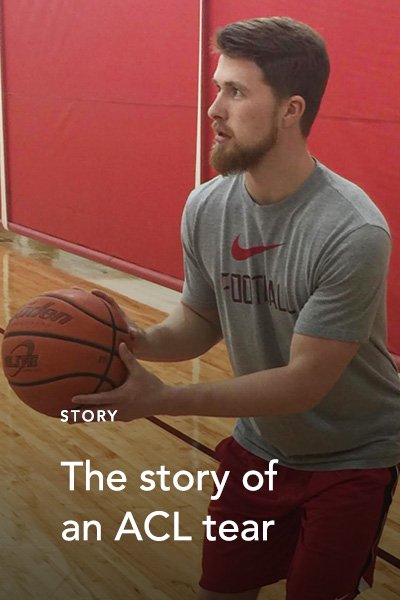Patellar/Knee Cap Instability
Kneecap Instability Surgery with Dr. Van Thiel
Read more below about the treatment for knee cap instability
The kneecap or patella serves an important role, protecting the moving parts of your knee joint from bumps and other injuries that could cause severe damage to the joint. Like the ends of the thigh bone (femur) and shin bone (tibia), the patella is held in place by strong ligaments that help it move in a specific way, keeping it centered over the joint hinge. Sometimes, though, the kneecap can become dislocated and slip out of place, causing pain, swelling, stiffness and joint instability. In this instance, kneecap instability surgery may be required.
Acute kneecap dislocation is most often caused by sports injuries, falls or a direct impact to the joint that forces the patella out of its normal “track.” While the patella can resume its normal position on its own, it is possible that you may need to have it repositioned in a kneecap instability surgery conducted by a professional orthopedist. In some patients, these painful dislocations can occur repeatedly. This condition is called chronic kneecap instability, and while it can be caused by an underlying injury, some patients have unusual joint anatomy that makes them more prone to instability and dislocation.
Chronic kneecap instability causes a lot of discomfort, and it can take a major toll on your ability to take part in physical activities. Fortunately, there are treatments that can stabilize the patella so your knee works normally again.
What are the symptoms of chronic kneecap instability and dislocation?
People who have kneecap instability typically have symptoms like swelling, bruising and pain around the kneecap, as well as joint stiffness and a feeling that the joint may “give way” or buckle when standing or moving. X-rays and other imaging studies will be performed by your orthopedist to confirm that your symptoms are being caused by kneecap instability and not by another issue like a fracture.
How is patellar instability treated?
In acute cases of instability, physical therapy and temporary use of a knee brace may be enough to help the knee regain strength and mobility. But when knee instability is a chronic and ongoing problem, treatment will focus on correcting the underlying cause so the kneecap moves and tracks normally.
Several treatment options are available, depending on the cause of instability. For cartilage damage, knee arthroscopy can help by removing loose fragments or reattaching the cartilage when possible. During the procedure, Dr. Van Thiel also may release tissues that are interfering with the kneecap’s normal movement or pulling the kneecap off track, allowing the patella to track normally again. When instability is caused by more complex issues like a ligament tear or laxity, medial patellofemoral ligament (MPFL) repair can be performed to restore a damaged ligament or to attach a ligament graft. In other cases, Dr. Van Thiel may perform a procedure called anterior medialization of the the tibial tubercle (or AMZ) to reposition the patellar tendon (or ligament), enabling the kneecap to track properly. After surgery, physical therapy will help restore joint function and strengthen the muscles that support the joint.
Take the first step toward relieving your knee pain…
with Kneecap Instability Surgery
Your knee joints take a lot of wear and tear each and every day, and patellar instability is just one possible cause of chronic knee pain. Today, there are more options than ever for treating knee pain so you can get back to enjoying the activities you love. The first step in finding relief is to schedule an evaluation with Dr. Geoffrey Van Thiel, a leading orthopedic surgeon and sports medicine specialist in greater Chicago area. Ignoring chronic knee pain won’t make it go away, and in most cases, the damage to the joint will just become worse. Don’t let your knee pain interfere with your enjoyment of life.
Schedule an office visit to Call OrthoIllinois at 815-398-9491 and schedule an office visit with Dr. Van Thiel today.




